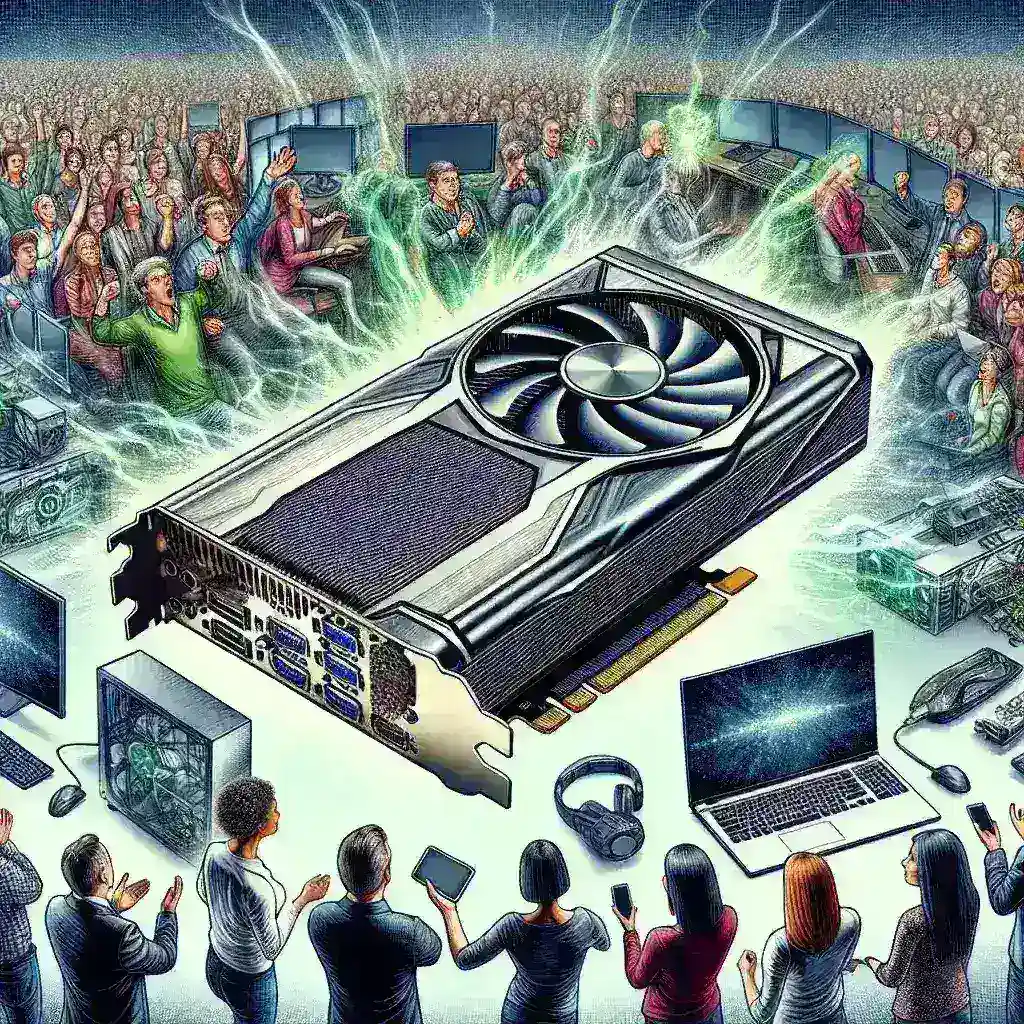Introduction
The world of computing has witnessed a remarkable transformation over the years, with one of the most notable shifts being the resurgence of external graphics units (eGPUs). Initially introduced to enhance the graphical capabilities of devices like laptops and compact desktops, these powerful peripherals have seen a renewed interest among gamers, creative professionals, and tech enthusiasts alike. This article delves into the reasons behind this revival, exploring the historical context, benefits, and future predictions regarding external graphics units.
Historical Context
External graphics units have existed for many years, but their popularity has ebbed and flowed based on technological advancements and market demands. In the early 2000s, eGPUs were primarily used by gamers seeking to boost their laptop’s gaming performance. However, with the advent of integrated graphics technology, many users shifted their focus to all-in-one devices and laptops with robust built-in graphics capabilities.
As technology progressed, the demand for more portable devices increased, leading manufacturers to prioritize compact designs over extensive upgrade options. This shift resulted in a decline in the popularity of eGPUs. However, as professional workloads intensified and gaming graphics demands soared, the need for external graphics solutions resurfaced.
Reasons for the Resurgence
1. Enhanced Performance
One of the primary reasons for the renewed popularity of external graphics units is the significant performance boost they provide. eGPUs enable users to harness the power of high-end graphics cards, which are often more powerful than the integrated solutions found in laptops. This increase in graphical power translates to smoother gaming experiences, faster rendering times, and improved overall performance in graphic-intensive applications.
2. Gaming on the Go
The modern gamer often seeks flexibility and mobility. External graphics units allow gamers to enjoy high-performance gaming on lightweight laptops without sacrificing portability. For instance, a gamer can connect an eGPU to their laptop at home for an immersive experience and easily detach it for travel. This adaptability has made eGPUs an attractive option for those who want to game on the go.
3. Future-Proofing
As technology continues to advance, so do the demands of software and games. Users are increasingly looking for ways to future-proof their devices without having to replace them entirely. External graphics units offer a viable solution by allowing users to upgrade their graphics capabilities without needing to invest in a new laptop. This longevity appeals to both casual users and professionals who rely on cutting-edge graphic technology.
4. Support for Multiple Displays
Another compelling feature of eGPUs is their ability to support multiple high-resolution monitors. Creative professionals, such as graphic designers and video editors, often require extensive screen real estate to work efficiently. With an external graphics unit, users can expand their workspace and improve productivity, making it an essential tool for those in creative fields.
5. Increased Access to High-End Graphics
Many users may not have the budget to invest in high-end laptops equipped with powerful graphics cards. External graphics units provide a cost-effective alternative, allowing users to obtain the performance they need without breaking the bank. This accessibility has played a crucial role in the resurgence of eGPUs.
Pros and Cons of External Graphics Units
Pros
- Improved Performance: eGPUs provide a significant boost in graphics performance compared to integrated options.
- Portability: Users can easily connect and disconnect eGPUs, providing flexibility for those who travel frequently.
- Future-Proofing: Upgrading graphics capability becomes easier, as users can swap out graphics cards when necessary.
- Multi-Monitor Support: eGPUs allow for connecting multiple displays, enhancing productivity for professionals.
- Cost-Effective: They offer a more affordable option for high-performance graphics compared to purchasing a new laptop.
Cons
- Cost: The initial investment in an external graphics unit can be substantial.
- Compatibility Issues: Not all laptops support eGPUs, leading to potential limitations.
- Bandwidth Limitations: Some connections may bottleneck performance, particularly over Thunderbolt interfaces.
- Space Requirements: Users need adequate space for both the eGPU and additional peripherals.
Future Predictions
As technology continues to evolve, it is expected that the popularity of external graphics units will grow. The gaming industry is constantly pushing for better graphics, and as new titles are released, the demand for high-performance solutions will only increase. Additionally, advancements in connectivity technology, such as Thunderbolt 4, are likely to enhance the performance and accessibility of eGPUs.
Moreover, as remote work becomes more common, professionals in creative fields are likely to seek versatile solutions that allow them to work efficiently from anywhere. eGPUs will play a vital role in meeting these needs by providing the power required for demanding applications.
Real-World Examples
Many users have shared their success stories regarding eGPU setups. For example, a video editor may connect an eGPU to their laptop to achieve faster rendering times, enabling them to meet tight deadlines. Gamers have indeed reported significant improvements in frame rates and graphics quality when utilizing eGPUs compared to their laptop’s integrated graphics.
Cultural Relevance
As the world becomes increasingly interconnected, the demand for high-quality graphics has permeated various sectors, including gaming, virtual reality, and digital content creation. This cultural shift has further propelled the appeal of external graphics units, as users seek to elevate their experiences and deliver high-quality content.
Expert Opinions
Industry experts have noted that external graphics units are not merely a trend but a transformative solution for modern computing needs. According to tech analyst Sarah Johnson, “eGPUs provide a bridge between portability and performance, catering to both gamers and professionals who require power on-the-go.” Such insights emphasize the long-term viability of eGPUs in the market.
Conclusion
The resurgence of external graphics units can be attributed to a confluence of factors, including enhanced performance, future-proofing capabilities, and the growing need for flexible solutions in an increasingly mobile world. As we look ahead, the demand for eGPUs is expected to rise, shaping the future of computing for gamers and professionals alike. Embracing this technology not only allows users to boost their graphical capabilities but also positions them to stay ahead in an ever-evolving digital landscape.

